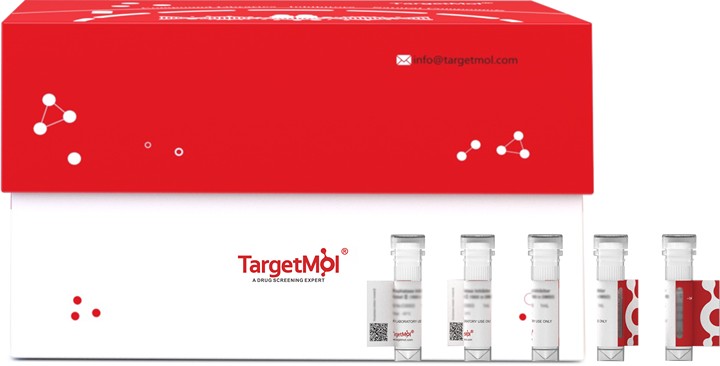Shopping Cart
- Remove All
 Your shopping cart is currently empty
Your shopping cart is currently empty

Human respiratory syncytial virus (RSV) (strain A2) Fusion glycoprotein F0 (B2M & His) is expressed in E. coli expression system with N-6xHis-B2M tag. The predicted molecular weight is 69.9 kDa and the accession number is P03420.

| Pack Size | Price | Availability | Quantity |
|---|---|---|---|
| 20 μg | $198 | 20 days | |
| 100 μg | $427 | 20 days | |
| 1 mg | $1,830 | 20 days |
| Biological Activity | Activity has not been tested. It is theoretically active, but we cannot guarantee it. If you require protein activity, we recommend choosing the eukaryotic expression version first. |
| Description | Human respiratory syncytial virus (RSV) (strain A2) Fusion glycoprotein F0 (B2M & His) is expressed in E. coli expression system with N-6xHis-B2M tag. The predicted molecular weight is 69.9 kDa and the accession number is P03420. |
| Species | RSV |
| Expression System | E. coli |
| Tag | N-6xHis-B2M |
| Accession Number | P03420 |
| Synonyms | Fusion glycoprotein F0,F |
| Amino Acid | NITEEFYQSTCSAVSKGYLSALRTGWYTSVITIELSNIKENKCNGTDAKVKLIKQELDKYKNAVTELQLLMQSTPPTNNRARRELPRFMNYTLNNAKKTNVTLSKKRKRRFLGFLLGVGSAIASGVAVSKVLHLEGEVNKIKSALLSTNKAVVSLSNGVSVLTSKVLDLKNYIDKQLLPIVNKQSCSISNIETVIEFQQKNNRLLEITREFSVNAGVTTPVSTYMLTNSELLSLINDMPITNDQKKLMSNNVQIVRQQSYSIMSIIKEEVLAYVVQLPLYGVIDTPCWKLHTSPLCTTNTKEGSNICLTRTDRGWYCDNAGSVSFFPQAETCKVQSNRVFCDTMNSLTLPSEINLCNVDIFNPKYDCKIMTSKTDVSSSVITSLGAIVSCYGKTKCTASNKNRGIIKTFSNGCDYVSNKGMDTVSVGNTLYYVNKQEGKSLYVKGEPIINFYDPLVFPSDEFDASISQVNEKINQSLAFIRKSDELLHNVNAGKSTTNIMITT |
| Construction | 27-529 aa |
| Protein Purity | > 90% as determined by SDS-PAGE. |
| Molecular Weight | 69.9 kDa (predicted) |
| Endotoxin | < 1.0 EU/μg of the protein as determined by the LAL method. |
| Formulation | Tris-based buffer, 50% glycerol |
| Reconstitution | A Certificate of Analysis (CoA) containing reconstitution instructions is included with the products. Please refer to the CoA for detailed information. |
| Stability & Storage | Lyophilized powders can be stably stored for over 12 months, while liquid products can be stored for 6-12 months at -80°C. For reconstituted protein solutions, the solution can be stored at -20°C to -80°C for at least 3 months. Please avoid multiple freeze-thaw cycles and store products in aliquots. |
| Shipping | In general, Lyophilized powders are shipping with blue ice. Solutions are shipping with dry ice. |
| Research Background | Inactive precursor that is cleaved at two sites by a furin-like protease to give rise to the mature F1 and F2 fusion glycoproteins.; Class I viral fusion protein. Under the current model, the protein has at least 3 conformational states: pre-fusion native state, pre-hairpin intermediate state, and post-fusion hairpin state. During viral and plasma cell membrane fusion, the coiled coil regions assume a trimer-of-hairpins structure, positioning the fusion peptide in close proximity to the C-terminal region of the ectodomain. The formation of this structure appears to drive apposition and subsequent fusion of viral and cellular membranes leading to delivery of the nucleocapsid into the cytoplasm. This fusion is pH independent and occurs at the plasma or endosomal membrane (Probable). The trimer of F1-F2 (F protein) also facilitates the attachment to host cell by binding to host heparan sulfate. F protein is involved in the entry into the host cell through the interaction with host IGFR1. This interaction activates PRKCZ/PKCzeta that recruits host NCL/nucleolin to the apical cell surface where it can bind fusion glycoprotein F1. Later in infection, F protein expressed at the plasma membrane of infected cells can mediate fusion with adjacent cells to form syncytia, a cytopathic effect that could lead to tissue necrosis. F protein may trigger p53-dependent apoptosis.; Major determinant of the species specificity of RSV infection. The trimer of F1-F2 (F protein) also facilitates the attachment to host cell by binding to host heparan sulfate. F protein is involved in the entry into the host cell through the interaction with host IGFR1. This interaction activates PRKCZ/PKCzeta that recruits host NCL/nucleolin to the apical cell surface where it can bind fusion glycoprotein F1. Later in infection, F protein expressed at the plasma membrane of infected cells can mediate fusion with adjacent cells to form syncytia, a cytopathic effect that could lead to tissue necrosis. F protein seems to trigger p53-dependent apoptosis. |

Copyright © 2015-2025 TargetMol Chemicals Inc. All Rights Reserved.